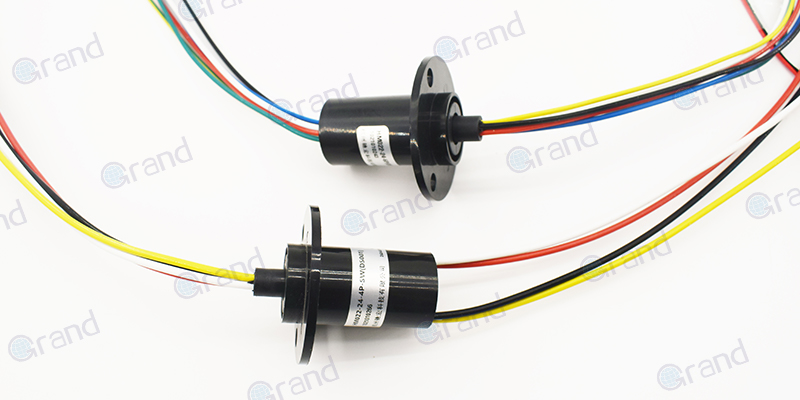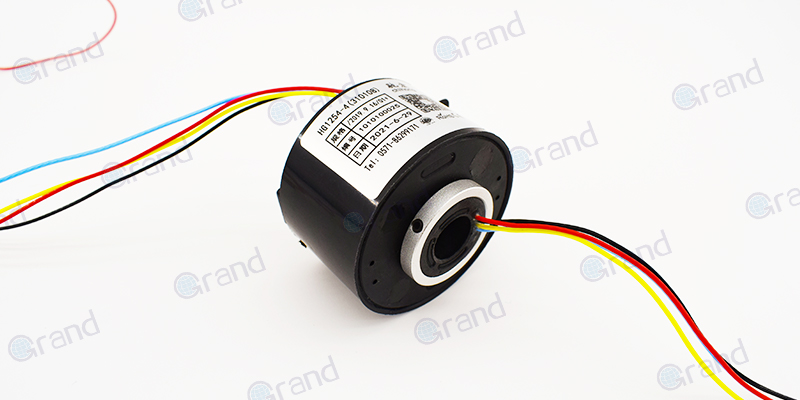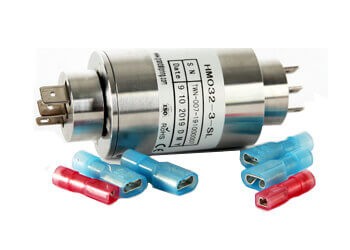A slip ring power connector, essential in a variety of mechanical and electrical systems, facilitates power and signal transmission from a stationary component to a rotating one. This unique functionality enables the seamless operation of many rotating systems such as wind turbines, medical imaging devices, radar antennas, and many more.
The slip ring power connector—a significant innovation in the field—was birthed from the necessity of overcoming challenges associated with unyielded power flow in 360-degree rotating applications. Dating back to the Industrial Revolution, devices have long required an apparatus that allows free rotation without tangling wires or interrupting the transmission of electricity or data. To meet this need, the slip ring power connector was developed, providing an intuitive and reliable solution.
Over time, the slip ring power connector’s utility and influence have permeated various industrial landscapes such as energy, healthcare, military, and even entertainment, playing a role in various mechanisms ranging from cable drums and rotary sensors to theme park rides and video surveillance systems. As technologies and industries continue to evolve and become more complex, the demand for efficient signal and power transmission solutions grows making the relevance of slip ring power connectors indisputable.
In this era of rapidly changing technology, the slip ring power connector stands as an invariable beacon of ingenious mechanical and electrical design. Today, we’ll delve into its components, mechanics, and design, and cast a glimpse into its future relevance and advancements. This exploration will offer invaluable insights into the operation of these incredible connectors, and why they remain irreplaceable in various industrial applications.
Overview of Slip Ring Power Connector
Description of Slip Ring Power Connector
A slip ring power connector is an electromechanical device that enables the transmission of power and electrical signals from a stationary structure to a rotating one. It chiefly consists of stationary brush contacts and rotating conductive rings, also known as “slip rings”.
The stationary brushes, often made from metal or graphite, maintain physical contact with the slip rings as they rotate. The brushes are linked to the stationary structure, while the slip rings are attached to the rotating part. Together, these components form a ‘brush-and-ring’ interface, a fundamental feature that sets the stage for the continuous transfer of electricity or signals among rotating equipment.
Types of Slip Ring Power Connector
There’s a bevy of slip ring power connectors available, each variant designed to match the distinct requirements characteristic to varied applications. Some common types include:
- Capsule Slip Rings: Crafted for compact spaces, these are small but efficient, ideal for systems such as CCTV and rotary sensors.
- Through-Bore Slip Rings: This variant features a hollow shaft down its center, catering to applications necessitating the passage of other devices like shafts or cables inside it.
- Pancake Slip Rings: As the name suggests, these display a flat, disc-like design ideal for height-limited applications.
- Mercury-Wetted Slip Rings: These utilize mercury instead of brushes, providing low resistance, high-speed, and near-silent operation, best suited for precision equipment like satellites.
Operating Principle
In grasping the fundamental mechanism of a slip ring power connector, consider it as a ‘rotary electrical interface’. Here’s how it works: The stationary brushes link to an external power source, carrying the current or signal. They make contact with the slip rings, which in turn rotate with the rotational structure. As the rings rotate, the brushes maintain steady contact, allowing the power or signals to be continuously transmitted without hindrance, enabling smooth, unrestricted rotation.
Behind this seemingly simple process lies a powerful design enabling the reliable and efficient operation of numerous mechanical and electronic systems. By bridging stationary and rotating parts, the slip ring power connector has become a cornerstone solution in an array of demanding applications across sectors.

Slip Ring Power Connector: Construction and Design Features
Materials and Technologies in the Construction of Slip Ring Power Connectors
Slip ring power connectors are predominantly constructed using highly conductive materials such as copper, bronze, or silver. Copper is particularly favored owing to its excellent electrical properties and cost-effectiveness. Recently, gold has also been used for miniaturized or high-precision connectors due to its superior electrical conductivity and corrosion resistance.
Advancements in technology have led to the introduction of new materials for brushes, such as precious metal alloys, carbon-graphite, and silver graphite. These materials showcase a low coefficient of friction, ensuring less wear and tear and thus, a prolonged lifespan of the unit. Additionally, for insulation purposes, different types of plastics or ceramics are utilized, each chosen in accordance with the specific operating environment and application of the device.
Key Design Features
At the core of a slip ring power connector are a few key design features that enable it to function as a reliable and efficient component:
- Precision-engineered brushes: Achieving optimal contact with the rotating rings, they assure minimal friction and wear.
- Wear-resistant testing: Rigorous testing ensures the connector’s resistance to various operating conditions and longevity.
- Sealing mechanisms: Associated with the degree of sealing protection (IP rating), they are designed to protect the slip rings from dust, moisture, and other environmental factors, thereby enhancing durability.
- Compact and flexible design: Suited for different space requirements, they can be customized according to specific needs and can be mounted in a variety of ways, facilitating easy and flexible integration into machines or systems.
Integration of New Technology in Modern Connectors
Modern slip ring power connectors are welcoming the integration of new technology. Wireless technology, for instance, is being assimilated into them to minimize mechanical contact, thereby reducing friction-related wear and promoting longer operational life. Another significant technological integration is fiber optic rotary joints (FORJs) in the place of metallic contacts, which allow high-speed data transmission, a must in today’s data-driven world. Furthermore, we are embarking upon combinations of different types of slip rings, such as Hybrid Slip Rings, which combine electrical and pneumatic or hydraulic interfaces, effectively catering to applications demanding multiple functionalities.
These advancements point towards a future where, despite their fundamental design remaining consistent, the variations of slip ring power connectors will evolve to become intricately connected to advanced technologies, paving the way to more efficient and reliable rotating systems.
Key Considerations When Choosing a Slip Ring Power Connector
The selection of a slip ring power connector is not a one-size-fits-all solution and warrants careful consideration. Here are some of the key factors to keep in mind when choosing a suitable slip ring power connector for a specific application:
Power Requirements
A primary factor to consider is the slip ring’s capability to handle the system’s power requirements. This includes the operational voltage and current. Also, the number of circuits needed to transmit power, data, or both should be determined. A slip ring intended for current-intensive applications will not suffice in a data-sensitive context and vice versa. Therefore, specifying these requirements is crucial for the right choice.
Rotational Speed
Rotational speed, expressed in rounds per minute (RPM), is a significant influencer in choosing a slip ring power connector. Different connectors are optimized for varying rotational speeds. Excessive speed may result in increased wear and tear, reducing the component’s lifespan. Hence, the slip ring must be rated to operate safely at the intended rotational speed.
Operating Environment
Slip ring power connectors can be designed to operate under diverse environmental conditions. Factors such as temperature, humidity, dust, and potential exposure to corrosive substances can significantly impact the connector’s performance. For example, a slip ring functioning outdoors, like in wind turbines, would require a high degree of protection against environmental factors. It’s essential to consider these conditions when selecting a slip ring power connector.
Size and Mounting Space
The physical size of a slip ring power connector is an important factor based on the available space within the system where it needs to be installed. Smaller slip rings may fit into compact applications but might encounter limitations in power or signal transfer capacity. Larger slip rings generally offer higher capabilities but require more mounting space.
Expected Lifespan
The expected lifespan of the slip ring is another crucial consideration. Factors like the quality of materials, type of brushes, and slip rings utilized, and the sealing protection can all influence the slip ring’s longevity.
By taking these factors into account, one can make an informed choice that ensures the selected slip ring power connector aligns with their requirements, guarantees efficient operation, and delivers an optimal lifespan.
Applications of Slip Ring Power Connectors
Slip ring power connectors have superfused into an array of industrial landscapes and are critical components tucked inside a host of systems. Their common role is delivering uninterrupted power and signal transmission to enable the seamless operation of rotating or spinning machinery. To understand their ubiquity, let’s delve into some real-world examples and use cases:
Wind Energy
A notable application of slip ring power connectors is found in wind turbines. The turbine blades rotate to transform kinetic wind energy into mechanical energy, but the base of the turbine and the generator remain stationary. For power and data signals to be transmitted between these two sections, slip ring power connectors are employed to bridge this gap, all while allowing for constant, unrestricted rotation of the turbine blades.

Medical Imaging
In healthcare, medical imaging devices like CT scanners and MRI machines require the free rotation of an internal ring for imaging, while the power and data signals need to be sent to a stationary external system. Slip ring power connectors facilitate this data and power transfer, ensuring the smooth operation of these life-saving diagnostic systems.

Defense Systems
Within the defense sector, radar antennas use slip ring power connectors at their rotating bases. The antennas rotate to identify aerial and terrestrial targets while the base, which houses the power and data systems, remains stationary. Once again, slip ring power connectors bridge the gap, enabling the continuous sweep of radar antennas.
Automation and Robotics
In manufacturing, robotics, and automatic production lines, some assemblies require rotating motion without power or data interference. Slip ring power connectors ensure uninterrupted processes, maintaining efficiency and productivity.

Amusement Rides
In amusement parks, many rides rotate and revolve in all sorts of directions. Power and sound systems, control electrical circuits, and even variable lighting arrangements need continuous power flowing through, all the while keeping the rider safe and amused. Slip ring power connectors are integral to achieving this, ensuring smooth and safe operation of these fun-filled rides.
Whether enabling the spin of a wind turbine, the steady rotation of radar antennas, or even powering the whirling amusement ride, slip ring power connectors perform a crucial role behind the scenes. As varied as their applications are, one concept remains constant: they are the heart of any system requiring rotational movement coupled with seamless power or signal transfer.
Pros and Cons of Using a Slip Ring Power Connector
Slip ring power connectors provide unique solutions, especially in applications where rotational motion is involved in conjunction with power or signal transmission. However, as with any piece of technology, they do come with inherent advantages and limitations.
Advantages of a Slip Ring Power Connector
- Continuous Rotary Transmission: This is the most vital advantage. Slip ring power connectors facilitate undisturbed, continuous transmission of electrical signals or power between stationary and rotating parts. This uninterrupted transmission helps in maintaining the stability and reliability of the entire system.
- Compactness: Many slip rings are designed for smaller space requirements, offering significant advantages in system design, especially where space constraints exist.
- Adaptable Design: Given their purpose, they are available in a vast range of types and sizes. The design can be tuned to cater to a specific application, taking into account factors such as number of circuits, voltage, current, rotational speed, size, or mounting method.
- Integration of Different Functionality: Modern slip ring power connectors can combine different functions into a single system. For instance, Hybrid Slip Rings allow the integration of data, power, gas, and liquid transfer within one unit.
Limitations of a Slip Ring Power Connector
- Wear and Tear: Due to the physical and mechanical nature of the devices, constant rotation can lead to eventual wear and tear, impacting the reliability and lifespan of the slip ring connector.
- Maintenance Requirement: Slip ring power connectors can require regular maintenance or replacement of worn-out components to maintain optimum performance and avert device failure.
- Noise Generation: The rotations may create electrical noise which could harm signal quality, especially in data-sensitive applications.
- Potential for High Initial Costs: Depending on complexity or customization needs, the initial investment for a slip ring power connector might be substantial.
Understanding these pros and cons can guide users to make informed decisions about using slip ring power connectors, helping them to select the most suitable device to meet their specific application requirements and environmental conditions.
Slip Ring Power Connector: Maintenance Tips and Best Practices
Maintaining the slip ring power connector is critical for ensuring its reliable performance and longevity. Here are some maintenance tips and practices that can help users optimize the functioning of their slip ring power connectors:
Regular Inspection
Regular inspection of the unit helps identify potential issues at the earliest. Check for signs of excessive wear, such as flaking or cracking on the brushes or rings. Also, look for debris accumulation, which can interfere with the smooth running of the slip ring.
Cleaning
Over time, debris like dust or carbon residue can accumulate and hinder the operation of the slip ring. Regular cleaning, as per the manufacturer’s instructions, can help keep the unit working optimally. Always ensure to use approved cleaning materials to avoid damaging any critical component.
Lubrication
Some slip ring power connectors need lubrication to reduce friction between components and prevent wear and tear. It’s essential to use the recommended lubricant and follow the given procedure.
Brush and Ring Replacement
The brushes and rings are wear components. They’ll gradually wear down over time due to friction during operation. Regular inspection will help determine when they need to be replaced. Always replace them with compatible components to avoid affecting the performance of your slip ring.
Ambient Conditions
The operating environment can significantly impact the performance and lifespan of the slip ring. Make sure the slip ring connectors operate within their specified temperature and humidity ranges. Also, keep them protected from dust and corrosive substances.
Professional Service
For complex or larger slip ring power connectors, professional service may be required. Trained technicians will be able to inspect, clean, repair, or replace parts more effectively to ensure prolonged usage and operational efficiency.
By following these maintenance tips and best practices, users can ensure smooth operation and prolong the life of their slip ring power connectors, significantly enhancing operational efficiency and mitigating any chances of unexpected downtime.
Future Trends of Slip Ring Power Connector
The technological landscape is perpetually evolving, and slip ring power connectors are not immune to this progression. Keeping an eye out for future innovations and trends can provide strategic insight for those who depend on these connectors. Below are potential developments we could see in the realm of slip ring power connectors:
Advanced Materials
The integration of more advanced materials into the construction of slip ring power connectors is a likelihood. Advanced composite materials or alloys, for instance, could provide more excellent durability, increased resistance to wear and tear, and better performance. Furthermore, we can expect the emergence of new designs featuring reduced contact resistance, improved electrical conductivity, and higher heat resistance.
Digitalization and Internet of Things (IoT)
The digital revolution has its implications here as well. Slip ring power connectors could be redesigned to be more compatible with the rapidly evolving digital world. IoT-ready slip ring power connectors, for instance, could provide real-time performance data, predict maintenance, and significantly improve the system’s overall efficiency.
Integration of Optoelectronics
Consolidating optoelectronics into slip ring power connectors could enable even higher data rates. Optical slip rings, or fiber optic rotary joints (FORJ), provide virtually limitless bandwidth capability and are immune to EMI, making them a promising field of development.
Miniaturization
With the increasing trend of down-sizing components, we could see the development of smaller yet more powerful slip rings. Their compactness won’t compromise their performance, making them a suitable choice for applications where space constraints exist.
Green Energy
With the push towards renewable energy sources, modifications within wind turbines are inevitable. Slip ring power connectors will need to adapt to new designs or technology upgrades within these systems, and may evolve to handle more enormous amounts of power to accommodate larger wind turbines.
Despite the rapidly evolving trends, manufacturers must ensure they continue to offer devices that meet specific applications’ needs—be it in terms of size, power and signal types, environmental conditions, or rotational speed. Combined with a continuous focus on increasing device longevity and reducing maintenance demand, the future of slip ring power connectors looks bright, complex, and exciting.
Conclusion
Slip ring power connectors are essential components in a variety of industries, providing a continuous power supply in rotating systems. By understanding their operation, construction, and applications, users can make informed decisions when selecting and maintaining these connectors. Future advancements in wireless technology and miniaturization promise to enhance their capabilities and broaden their applications in various industries.
See What We Can Do


